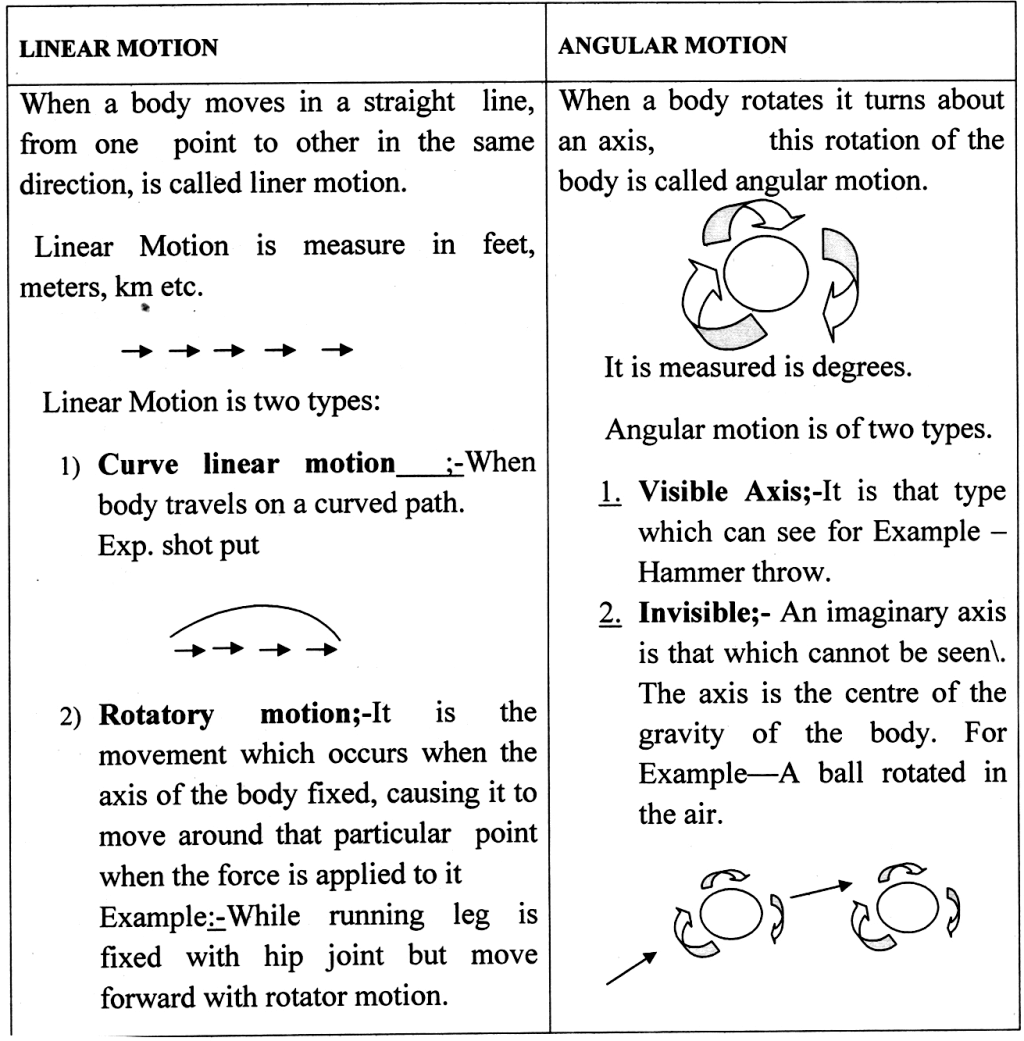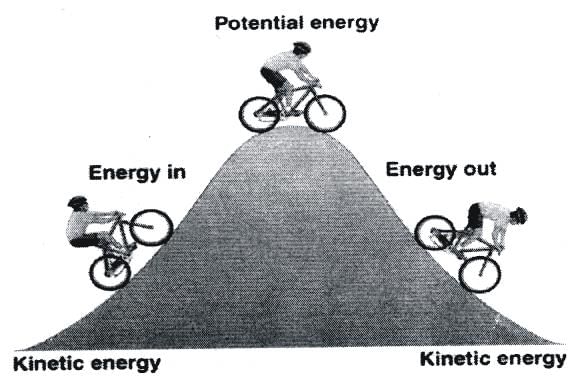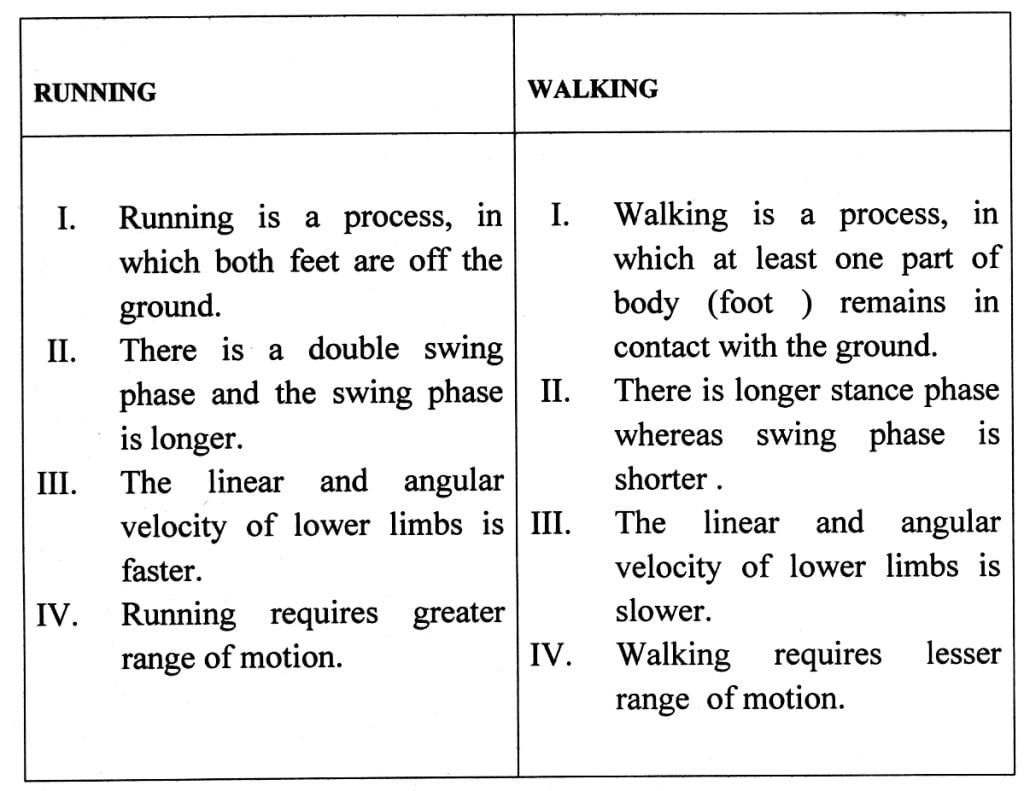Short Questions With Answers - Biomechanics and Sports | Physical Education Class 12(XII) - Notes & Model Test Papers - Humanities/Arts PDF Download
Q.1. What do you mean by sports Biomechanics?
Ans. Sports Biomechanics is the study of forces and stresses of human movement & their effect on athletics.performance and safety.
Q.2. What is power?
Ans. The Rate of doing work or using energy is called power.EX kicking a football or lifting the weight
Power= Work done/Time taken to do work.
Q.3. Define work?
Ans. Work refers to an activity involving a force and the Movement in the direction of force. It can also be defined as “the work done by a constant force as the product of force and the distance moved in the direction of the force”. Work Done = Constant force x Distance moved in the direction of the force.
Q.4. Explain Gravity?
Ans. Gravity is the force of attraction exerted by the earth towards its center on a body or an object.
Q.5. Define trajectory?
Ans. The flight path followed by a projectile is called its trajectory. Ex. Throwing a ball into the air.
Q.6. Explain one of the most important differences between the Mechanical analysis of walking and running?
Ans. In running a time comes when both the feet are off the ground which is called float phase, while walking one foot is always in contact with the ground.
Q.7. What is air resistance?
Ans. Resistance is a force, which created by the contact between the two surfaces. When a projectile moves through the air, the force applied by the air that opposes the motion of the projectile is called air resistance.
Q.8. Define velocity?
Ans. The displacement covered by an object per unit time is called velocity. Ex. Time is taken in 100m by and athlete. Velocity = distance / Time
Q.9. What is Energy?
Ans. It is the capacity to perform work.
Q.10. What is friction?
Ans. Friction is the force that opposes the relative of one surface over another. EX. Ball stops after covering a distance.
Q.11. What is friction? Discuss various types of friction in sports.
Ans. Friction is the force that combats relative motion between the two surfaces that come in contact. Friction always acts in the opposite direction of the applied force.
Types of Friction:-
1. Static Friction- The opposite force that comes into play when one body tends to move over another surface, but the actual motion has not yet started
2. “Static friction is the friction that is present when two bodies are static. This kind of friction can stop from moving on a path.
Dynamic friction- The opposing for that comes into play when one body is actually moving over the surface of another body. Dynamic friction may be of two types.
1. Rolling friction- The opposing force that comes into play when one body is actually rolling over the surface of another body. For example, hockey/cricket ball is hit.

2. Sliding friction- The opposing force that comes into play when one body is actually sliding over the surface of the other body. For example-Ice skating.
Q.12. Differentiate between Linear and Angular motion?
Or
Describe the two types of motion in sport?
Ans. Motion means “a change of position of a body and consists of the upsetting the equilibrium of a body”.
Q.13. What is energy? Explain about kinetic energy & Potential Energy.
Or
Differentiate between kinetic energy & Potential energy?
Ans. The energy is the capacity to do work.
There are two types of Energy:-
Kinetic Energy:- It is defined as energy possessed by a body as a result of motion. For Example:- If a javelin is in linear motion at its fullest speed, its kinetic energy will be more. When it is slow, it loses its kinetic energy. When it touches the ground, it has no kinetic energy. Kinetic energy also depends on the man or a thing. Kinetic Energy = 1/2 mass x velocity (1/2 mv2)
Potential Energy:- It is energy which is stored up in a body because of its position. For Example:- When a basketball is thrown upward, it gains in height. The movement of a ball comes to an end. It means the ball gets potential energy whereas kinetic energy goes away, when the basketball after reaching a certain height stops, its kinetic energy reduces to zero and the basketball has only potential energy. PE = Mass x Gravitational Force x Height of the body from the ground (mgh).

Q.14. Differentiate between Running and walking?
Q.15. Is friction advantageous or disadvantageous in the field of games and sports? Give your Comments with examples.
Ans. Friction is usually called a necessary evil. It means it is essential in life and we cannot do any work without it.
Advantage of friction:-
a. Keeps the object at position:- by friction, the object can be placed at position and shaped.
b. Helps to move:- Friction forces help to move the object Ex: running or walking. With friction of feet/ shoes on the surface, helps to speed.
c. Frictional force:- helps to move the object in the speed. For Example:- Spikes are used by the athletes to run fast.
d. Hold or grip an object:- With the help of friction ridges of skin of our fingers and palm enable us to grab hold objects. For example- In badminton, the players use grip to hold it.
e. Produce heat:- The law of conservation of energy states that the amount of energy remains constant. Thus, the energy that is due to friction in trying to move the object is really converted into heat energy.
Disadvantages of friction:-
a. Wear and tear of object:- due to friction, there is wear and tear of object. Lubrication is used to allow the parts to move easier, moreover, prevents wear and tear.
b. Wastage of Energy:- Excess of friction means extra energy, thus energy is being wasted.
c. Slow down the speed:- In the roller skating, Rolling shoes and smooth surface are used to minimize friction.
d. Makes movement difficult:- Friction can make the job more difficult when one has to move the other object. Excess friction can make it difficult to slide a box across the floor, walking through deep snow.
Q.16. Mr. Vinay is a physical education teacher in a govt. school and he was a renowned national level long jumper during his teenage. Mahesh is also a long jumper & his landing is improper. So he lost his position. Mahesh went to Mr. Vinay to seek help Mr. Vinay gave him proper scientific technique tip to follow correct body posture while landing & also motivated to utilize the same jump consistent practice. After the one year of training mahesh won gold medal in the Inter Zonal Athletic Meet.
I. What was the problem facing by Mahesh body?
II. State the qualities of Mr. Vinay as a coach?
III. Explain the role of coach in the life of a sportsman?
Ans.(i) He was facing problem in landing technique of Long Jump/ Mahesh was facing the problem of improper Landing in his long jump event so he didn’t win any medals in the athletic meet.
(ii) Mr. Vinay has following qualities.
1. Good motivate,
2, Dutifulness,
3. Knowledge of scientific techniques or mastering in skill,
4. Helping attitude,
5. Good coordination.
(iii) As a coach he can play in two different areas :-
i. Information feedback, implementation in the respective field of skill.
ii. Suggest, refer, engage with field experts.
|
12 videos|72 docs|31 tests
|
FAQs on Short Questions With Answers - Biomechanics and Sports - Physical Education Class 12(XII) - Notes & Model Test Papers - Humanities/Arts
| 1. What is biomechanics and how does it relate to sports? |  |
| 2. How does biomechanics contribute to improving sports performance? |  |
| 3. What are some common applications of biomechanics in sports? |  |
| 4. How can biomechanics help in injury prevention in sports? |  |
| 5. What role does technology play in biomechanics and sports? |  |
















